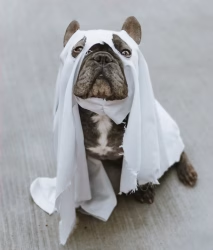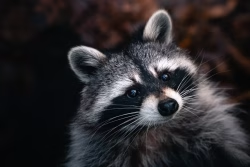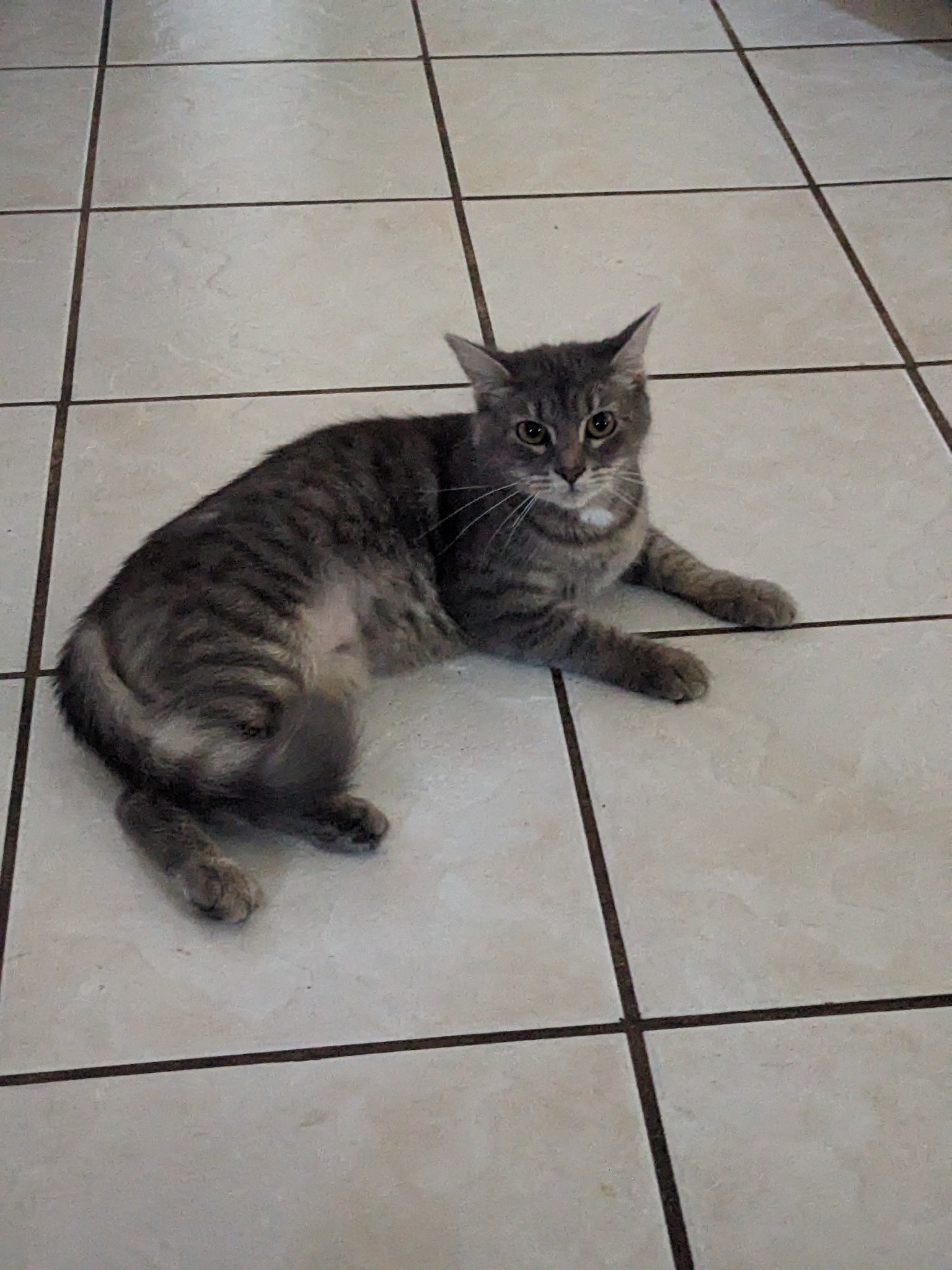People who love pets will agree that it isn’t all snuggles and rainbows. Even in the best of circumstances, there is sure to be plenty of poop, pee, barf, hairballs, shed fur, muddy paw-prints, occasional fleas, shredded upholstery, routine vet bills, and sometimes much worse.
But devotees of dogs, cats and other animal friends wouldn’t have it any other way. It’s a common refrain among humans with rescue animals to claim that “Fluffy rescued me.”
If you’re not a pet-person, this may sound trite.
But the weekly work of a dog named Beau and his human Karey Spidell confirm that there’s a lot more to the animal-human conversation than Hallmark Channel sentimentality. Every Wednesday afternoon, Spidell and Beau, a mature, tall-at-the-shoulder (30 inches) Golden Doodle, tall enough to be petted over the railings of a hospital bed, arrive at Huntington Hospital for their P.A.T. shift, P.A.T. being the acronym for Pet-Assisted Therapy.
This volunteer duo has been showing up here since mid-2022, but Spidell, a Boise native, has been involved with pet therapy far longer. “I’m a facilitator of connection,” she says. Her past work included bringing Beau to middle schools to support stressed-out students during finals week, as well as providing connection to individuals on the autism spectrum.
After moving to La Cañada from San Jose with her family in 2020, Spidell spied a notice seeking hospital volunteers while visiting the vet with Beau. “The notice was for Huntington Hospital. I guess I could have volunteered at the gift shop or something else,” says Spidell, “but knowing the effect that Beau has on people, there was a very clear way to go.”
An excerpt from the Huntington Hospital training manual reads:
“On the surface, the mission of the P.A.T. program is deceptively simple: to provide visitations with carefully screened and well-trained dogs to those patients, visitors and staff members who desire them. In truth, however, the deeper values of the interactions lie in the ability of the volunteers to give of themselves and their time to nurture those in need and to add a dimension to health care at Huntington technology can never provide.”
Dogs have been a full-time presence in the hospital since 1984, where they gave comfort to patients in rehabilitation and acute care units. The program was expanded in 1990, and is funded by grants and community donations.
Volunteers who are at least 18 years old bring their own dogs, which must be at least one year old. All dogs are evaluated by a third party, petpartners.org, a nonprofit agency. Once the dog passes evaluation, both human and canine shadow an experienced volunteer human-canine team, with a dog of a similar size, at the hospital. The next step is that the new volunteers, human and canine, are shadowed by a fellow P.A.T. duo until the newbies are comfortable making rounds on their own.
Call It Canine Intuition
People who share their lives with pets can easily recount instances when a beloved animal knowingly, somehow, gave us extra snuggles when we were needy or feeling down. On a grander scale, wolves and horses now are used in various therapies.
The notion gained even more acceptance this past summer when a Golden Retriever named Beacon, who incidentally is the dog companion of Pasadena resident Tracey Callahan Mohar, became the first therapy dog for the U.S. Gymnastics team. Beacon’s classically Golden Retriever personality — wiggly, waggly, snuggly, goofy, friendly — helps the athletes decompress, fight anxiety, and remain focused even when experiencing physical pain.
Beau joined Spidell’s family when he was just eight weeks old, and says, “Right from the beginning, he’s been a good doggie-citizen. He learned cues early and became well-socialized immediately.”

At 68 pounds, Beau’s bone-structure tends toward the poodley, and Beau “hugs” consist of Beau pressing or leaning against humans, seeming to intuit where and when he is needed. “Sometimes I have to listen to him,” says Spidell. “For instance, if there’s a family huddling in the corridor outside a patient’s room, as a fellow human I don’t feel comfortable just barging into an intimate and probably distressing conversation. But Beau doesn’t have that inhibition. He will lead me over to them, and just lean against their legs, tail doing a slow wag. I see the lines in their faces smooth out. He creates a moment of respite.”
Spidell recalls waking down a corridor as two nurses approached. Beau instinctively went to one of them and gave her a warm, silky press, and the nurse dropped to her knees, saying “He knew I needed him!”
She says, “Often, people in the hospital are lonely and bored. Beau and I don’t approach anyone with the intention of fixing them. Instead, we say, ‘How can we spend time with you?’ and ‘Would you like a visit from my furry friend?’”
She says that Beau is always bathed in advance of his weekly visit, and groomed every other week for a safely pristine encounter. Her clearance allows her into the hospital’s prenatal ward, critical care unit and the emergency department, and she and Beau may be called upon to sit with someone experiencing what’s called a 5150, code for a mental health crisis when an individual poses a danger to themselves or to others.
Whether mammalian magic or simple science, a patient’s closely monitored blood-pressure has been known to ease down after a pet visit.
“Beau is 12 years old now, which is about 80 or so in doggie years,” she says. “But he is so purposeful. It gives me so much joy to be with him. This is his job, his vitality, and he loves it. And we’ll do this together as long as Beau wants to. It all just really boils down to Beau’s willingness to let anyone love on him.”
Small Shelter with a Big Heart
On Saturday, October 19, San Gabriel Valley Humane Society will celebrate 100 years of matching animals with loving homes with a family-friendly fundraiser.
The event begins with donuts served from an original Helm’s Bakery truck, and Rocky Kanaka’s Flip Coffee. Following will be a Blessing of the Animals and a Poker “Dog Pack” walk led by SGVHS alumni dogs and families. To register for the walk, visit: https://www.eventbrite.com/e/san-gabriel-valley-humane-society-100th-anniversary-poker-dog-pack-walk-tickets-1013302794937?aff=erelpanelorg

From 11:00 AM, activities include agility scramble, dog “pawtrait” painting, dog-tag making, photo booth, games and cross-species family fun. Food trucks Dina’s Dumplings, Tropic Truck and Coco’s Lip Smacking Cupcakes bring the yum-factor. Costumes are welcome, as are well-behaved dogs.
The century-old nonprofit, founded by animal rights advocate Fannie Thompson Kessler in 1924, is an open-admissions shelter that welcomes animals from Duarte, San Gabriel and Temple City regardless of their breed, age, medical condition or other criteria..
SGVHS can house up to approximately 100 dogs and 175 cats at any given time, more in times of emergency. Last year, the shelter found new homes for 476 animals and reunited 194 lost pets with their owners. So far this year, it has re-homed 414 animals and reunited 128. Among them: Basset Hound Millie, who was adopted by George and Amal Clooney in 2015. Another is Howard, Best in Rescue winner of Hallmark Channel’s American Rescue Dog Show.
Presenting sponsors include Animal Medical Hospital Pasadena, Cabinet City, Pacific Plaza Premier Development Group, Reni Rose – Berkshire Hathaway Home Services, and Stanley Pest Control. Contributing sponsors include Athens Services, iK9Dogs, IMA Financial Group, and San Gabriel Nursery & Florist.
DEETS
- When: Saturday, October 19, 9:00 AM -4:00 PM
- Where: San Gabriel Valley Humane Society, 851 E. Grand Avenue, San Gabriel, CA 91776
- Event registration: https://www.eventbrite.com/e/san-gabriel-valley-humane-society-100th-anniversary-celebration-tickets-1013225142677
Barks, Boos, and Brewskis

More doggone fun is in store at The Arboretum as Halloween approaches. Pasadena Humane will wheel in the mobile adoption truck to introduce guests to precious pups in search of a safe, loving home. The Sunday-in-the-park event is hosted by Fera Pets, a supplement brand for dogs.
Mt. Lowe Brewing Company will pour the ale, and food trucks will supply nibbles and noshes. All Hallow’s attire is encouraged, and guests are welcome to enter their dogs in a costume contest. Fees will benefit Pasadena Humane and LA Arboretum Foundation.
Dogs must be on-leash at all times, must stay on paved paths and grass areas, and all guests must observe event etiquette, including of course picking up yer pooch-poop.
DEETS
- Barks & Boos
- Sunday, October 27
- 11:00 AM – 4:00 PM
- Registration required
- Doggie Costume Contest at 2:30 PM
- Los Angeles County Arboretum & Botanic Garden
- 301 North Baldwin Avenue, Arcadia, CA 91007
- 626-821-3222
- $10 fee for each canine attendee
- Non-members must also purchase admission for each human attendee, in addition to dog fee for each dog
The Straight Poop
There’s always some degree of contention between dog-people and cat-people, although many true animal-lovers are non-partisan. We know better than to take sides, but we have to give cats one point on the topic of coprophagia, or the eating of poop. And let’s not even talk about drinking out of the toilet. Cats truly never do this. But dogs often doggie-“doo.”
According to the American Kennel Club, one in six dogs is classified as a “serious” scat-snacker, meaning that the dog has been observed gobbling up droppings, whether its own or someone else’s, a minimum of five times. One in four was observed eating poo at least once, the theory being that dogs evolved as scavengers (versus heroic, lupine predators), according to Steven R. Lindsay, animal behaviorist and author of the Handbook of Applied Dog Behavior and Training, Adaptation and Learning. Lindsay’s reasoning is that scavengers can’t be choosy, and that in desperate times, poop can be an emergency protein-source of sorts.
All together now: Ewwwwwwwww. Think about THAT the next time Rover starts to slobber all over you.
This is one of the many reasons to promptly pick up your canine’s poo and discard it immediately (in your own trash can, please, or else invoke the collective wrath of Nextdoor). Poo from any source may contain parasites that can make your dog, and the rest of us sick, literally, especially when you’ve got little ones rolling around in the yard and sticking their tiny fingers in their tiny little mouths.
Now hear this: The Los Angeles County Department of Public Health warns that poo-consumption is now riskier than ever, thanks to the presence of Baylisacaris procyonis, an infection passed on by the parasite also known as raccoon roundworm. In humans, the Baylisascaris parasite can infect the spinal cord, brain and eyes and lead to swelling of the brain and eye disease.
Two cases have been reported in the South Bay. That’s because this infection is zoonotic, meaning that it can pass from animals to humans. The Department reports that 60 percent of infectious diseases in humans originate in animals or involve animals, especially wildlife.

Here in our valley and foothills, raccoons are plentiful, and the incidence of infection among raccoons is likely high. Although the parasite does not make the host raccoons sick, the waste of infected raccoons contains the roundworm’s eggs, and this can make humans, dogs and cats sick, although this transmission is rare.
You may or may not be versed in how to ID raccoon feces. No worries. Just immediately pick up all manner of turds on your property, then take great care to wash your hands thoroughly with soap and warm water afterward. Old-school soap and water are proven to actually be more effective at killing germs than COVID-era hand sanitizer. For giggles, use both.
And when out for a constitutional with your canine, take extra care to pull your dog away from any mouthwatering pile of poo-poo-pa-doop.
This week’s pets in need of homes:




















Click on photos to see larger images and captions.
NOTE: Animal House is taking a week off, returning on October 10th.
















































